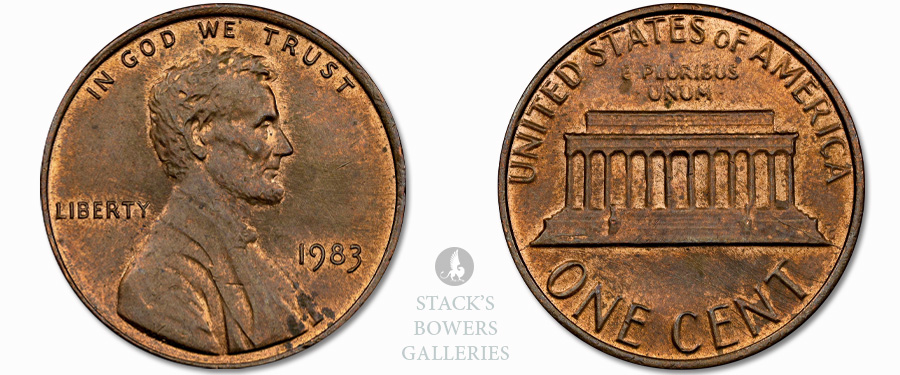
In the age of click bait articles about finding “rare pennies” in your pocket or in your change jar, our offices field countless calls daily from folks who think they have discovered their fortune this way. Most times, unfortunately, their coins are not rarities, but are worth just what is stamped into the design. This blog though is about the discovery of one of the finest known wrong planchet, transitional cent errors of 1983.
Copper cents were struck from the earliest days of the mint in 1793 until August 1982, when due to the rising cost of copper, the change was made to a copper plated zinc planchet. The old copper planchets have a weight of 3.1 grams, while the new “Zilincolns” as they are sometimes nicknamed, weigh significantly less at 2.5 grams. For this item (and the few others like it) to have been created, a bin that had been used to store copper planchets before the switch, was reused in 1983. A copper planchet, stuck in the bin, was shaken loose and fell into the hopper, along with thousands of the copper coated zinc blanks. This planchet made it into the coining press, was struck, went into a bag, and was released from the Mint to the Federal Reserve system and then sent to a bank for circulation.
This coin, graded MS-64 RB by NGC, must have been pulled from circulation early on. The color is an appealing mix of mint orange-red that blends with soft gray-brown tones. The strike is somewhat soft in places, as the dies were set for the lighter and softer copper-plated zinc planchets. No marks of consequence can be found anywhere; we note, for the sake of full disclosure, a few unobtrusive carbon flecks.
This is a very rare and important modern issue that, like the 1943 copper cent, belongs in an advanced set of Lincoln cents.
If you have rare Lincoln cents to consign, there is still time to get them to us for our March 2024 Showcase Auction. Contact us today at Consign@StacksBowers.com.





